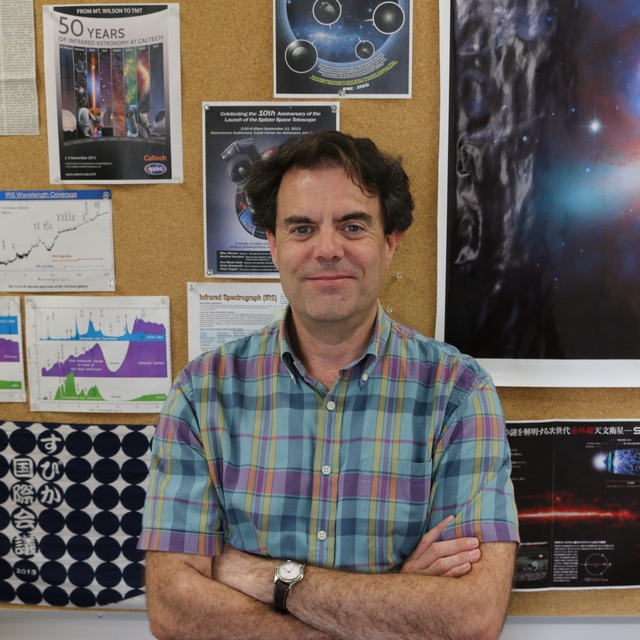
Searching for Compact Obscured Nuclei in Compton-thick Active Galactic Nuclei
June 2025 • 2025ApJ...985..259J
Abstract • Compact obscured nuclei (CONs) are heavily obscured infrared cores that have been found in local (ultra-)luminous infrared galaxies. They show bright emission from vibrationally excited rotational transitions of HCN, known as HCN-vib, and are thought to harbor Compton-thick (CT, NH ≥ 1024 cm‑2) active galactic nuclei (AGNs) or extreme compact starbursts. We explore the potential evolutionary link between CONs and CT-AGNs by searching for CONs in hard-X-ray-confirmed CT-AGNs from the Great Observatories All-sky LIRG Survey (GOALS). Here, we present new Atacama Large Millimeter/submillimeter Array Band 6 observations that targeted HCN-vib emission in four hard-X-ray-confirmed CT-AGNs. We analyze these objects together with literature HCN-vib measurements of five additional hard-X-ray-confirmed CT-AGNs from the GOALS sample. We do not detect any CONs in this combined sample of nine CT-AGNs. We then explore a proposed evolutionary sequence in which CONs evolve into X-ray-detectable CT-AGNs once outflows and feedback reduce the column densities of the enshrouding gas. We find, however, no evidence of well-developed dense molecular outflows in the observed CT-AGNs. While this could suggest that CT-AGNs are not universally linked to CONs, it could also be explained by a short duty cycle for molecular outflows.
Links
- PREPRINT http://arxiv.org/abs/2504.15248
- NED https://ned.ipac.caltech.edu/uri/NED::InRefcode/2025ApJ...985..259J
- ELECTR https://doi.org/10.3847/1538-4357/adcecb
- SIMBAD https://simbad.u-strasbg.fr/simbad/sim-ref?querymethod=bib&simbo=on&submit=submit+bibcode&bibcode=2025ApJ...985..259J
- PDF https://iopscience.iop.org/article/10.3847/1538-4357/adcecb/pdf
- DATA http://archive.eso.org/bin/ads2eso?2025ApJ...985..259J



